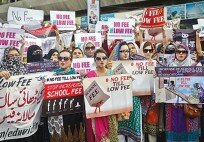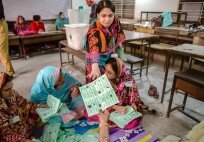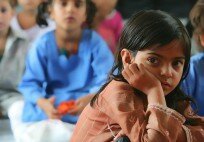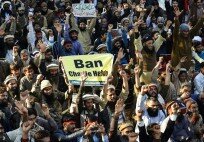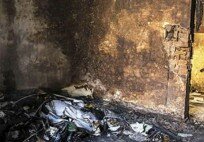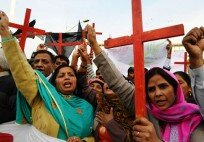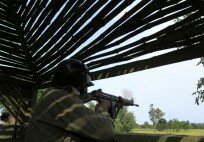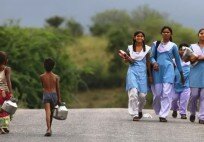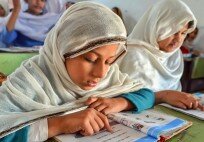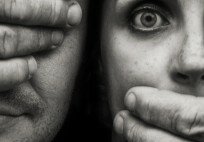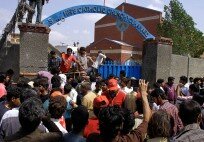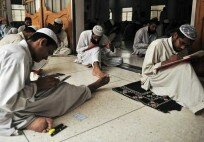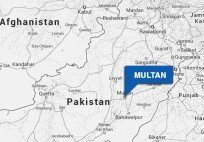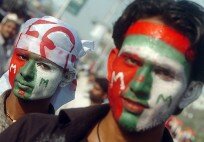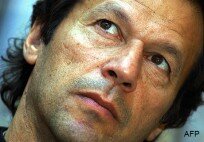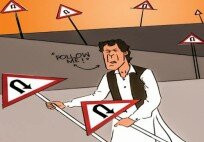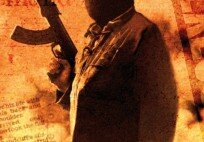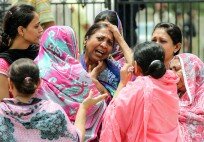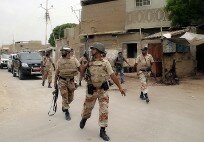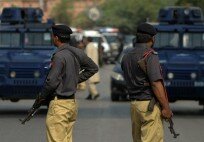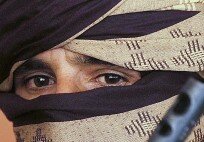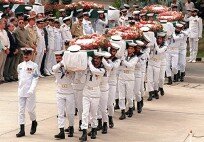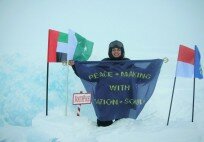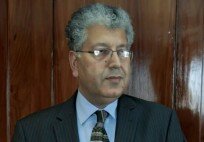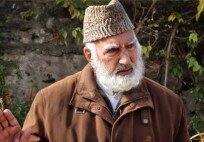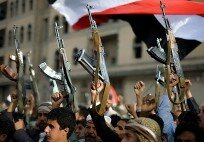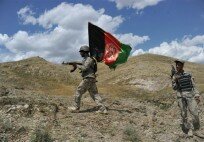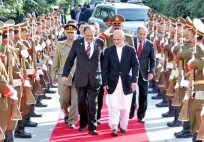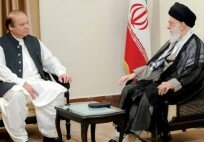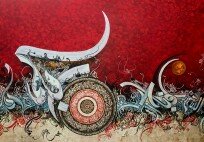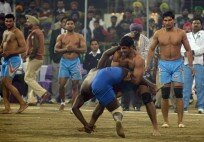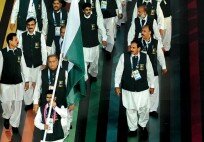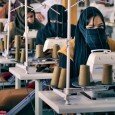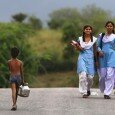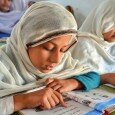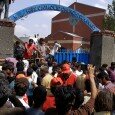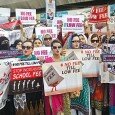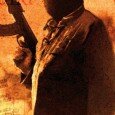By Omar Nawaz –
Corporal punishment and communication gap are taking an alarming toll on students as the dropout rate and suicides reveal
Her only offence was supposedly, making a noise in the classroom, even which she denies. Aneeta Shaheen, an 8th grader, got a thrashing for it which left her with a broken shoulder. A student in a public school for girls in Nau Gazi, a village on the outskirts of Islamabad, 13-year-old Shaheen almost crawled back to her maternal uncle’s house after she was relentlessly clubbed by her class teacher.
“Her (teacher’s) angry face still frightens me whenever I recall that moment,” said Shaheen, who plainly refused to go back to school after the beating she suffered at the hands of Mrs Saeeda Begum. Narrating the incident she said her name was put on the blackboard by the class monitor for allegedly, making a noise which evoked the fury of her class teacher.
“She (the teacher) did not bother to confirm if the allegation were true and started beating me with the stick,” said Shaheen. “Despite my repeated pleas that the head girl was lying, Mrs Saeeda did not stop until I fell on the ground,” she added.
The girl felt extreme pain in her left shoulder. Before leaving the class, the teacher instructed Shaheen’s classmates not to give her water or help her in any other way. She dragged back to her maternal uncle’s house nearby. He took her to the Poly Clinic hospital where medical examination confirmed her shoulder was fractured and she had multiple torture marks on her body.
Shaheen claims she could never dare misbehave with her strict teacher. “I do not know what came over her,” said the victim and pointed out that the class monitor who reported her to the teacher did not like her (Shaheen). She said the monitor had deleted all names except Shaheen’s before the teacher’s return.
“According to a Sparc study, some 35,000 high school children in Pakistan drop out of the education system each year due to corporal punishment”
Challenging the corporal punishment, the family went to the police but it bore no result. Her maternal uncle Muhammad Latif said the women police station officials delayed registering the case despite the clear medical report. The matter lingered on for more than a week before the teacher finally, sent a common friend to the family of Shaheen with an apology and struck reconciliation. Initially, Latif had refused to accept the apology.
The family’s decision not to remain silent not only made the teacher apologize but forced the school management to transfer her after some sections of media got wind of the incident. Nevertheless, Shaheen plainly refused to go back to school, raising fear within the family that she might drop out as often happens in such cases.
Pakistan has a relatively high rate of dropouts resulting from corporal punishment at schools, which stands at 50 percent during the first five years of education, according to the Islamabad-based Society for the Protection of the Rights of the Child (Sparc), a local non-governmental organisation (NGO), advocating the rights of children.
According to a Sparc study, some 35,000 high school children in Pakistan drop out of the education system each year due to corporal punishment. The organization further reveals that high dropout rate among children contributed heavily to the number of street children present in the country.
Qindeel Shujaat, a lawyer currently working with Child Rights Desk Pakistan, a non-governmental organization working for Children Rights, said this form of punishment has become a culturally accepted form of child abuse. “Many schoolteachers and parents remain convinced that some degree of bodily punishment is necessary to teach children discipline,” said Shujaat. He has conducted many studies on the state of children’s rights in Pakistan, including the issue of corporal punishment at schools.
“Before leaving the class, the teacher instructed Shaheen’s classmates not to give her water or help her in any way after the beating broke her shoulder”
He said the phenomenon was widespread in the public schools particularly in the rural areas of the country. Shujaat said it was more of an attitude problem with teachers and parents, which needs to be addressed.
The Khyber-Pakhtunkhwa government banned corporal punishment in primary schools in 1999. Next year, the governments of Balochistan and Punjab issued similar instructions and followed them up with action against some teachers. Sindh government was late but also followed suit.
However, the situation remains as worrisome as it was before despite a campaign at government level and awareness drives by civil society organizations. According to Advocate Shujaat, under-reporting, less focus on attitude-changing campaigns, legal lacunas and poor implementation of the existing law on protection of children’s rights were some of the reasons why corporal punishment still prevails.
“Section 89 of the Pakistan Penal Code provided a legal loophole for guilty teachers or parents to get away with legal action against them,” said Shujaat. It allowed the parents and teachers to use some degree of physical punishment to students such as necessary to teach them discipline. Thus it prevented the police from moving against the culprits.
However, the situation changed after the passage of Child Protection and Welfare Act 2010 which banned corporal punishment. “It (the law) stipulated that anyone found guilty of corporal punishment would be imprisoned for a period of six months with a fine of up to Rs50,000,” said Shujaat. He added the implementation was still a problem particularly after the devolution of education to provinces. “It was hard to follow up there,” said the lawyer.
Pakistan was among the first 20 countries to ratify the United Nations Convention on the Rights of the Child, which holds the state responsible for protecting the child from any form of abuse, torture, or degrading punishment and for maintaining the child’s dignity.
However, a survey in 2005, conducted by the United Nations Children’s Fund, in collaboration with the government of Pakistan and Save the Children (a nongovernmental organisation), found that all 3,582 children interviewed were beaten at schools. Seven per cent of them said they had suffered serious injuries from punishments.
The survey also found that corporal punishment diminished rather than improve children’s concentration in schools and was a major factor leading them to drop out of school. If corporal punishment-induced dropouts failed to attract public and government attention to their plight, a more appalling phenomenon has certainly succeeded in doing so. It involves the victims of such abuse taking extreme steps to end their lives (See box).
The writer is an Islamabad-based crime reporter
Driven to despair
Shaheen was lucky that her family acted sensibly and did not push her against her will to join school. Today, she is studying again after receiving counseling from her family.
Mobin Abdul, a boarder at a school in Abbottabad, however, was not so fortunate. In May this year, he hanged himself from a ceiling fan. In a suicide note, he wrote that he had cautioned his parents against torture he was suffering at the hands of a certain teacher and despite not wanting to go back to the hostel was forced (by them) to do so.
After the torture and insult at the hostel became unbearable for the student, he decided to end his life than return to ‘the hell’, according to the suicide note. Experts believe such actions by children result from a lack of communication between children and parents and children and their teachers.
A classic case of such an incident surfaced with the death of a 9th grader in Islamabad a few days ago. Sixteen-year-old Khurshid Ali was found dead in his house in the area of Shehzad Town. Police said he shot himself in the head with his father’s licensed 30 bore pistol and died on the spot.
His father told the police the boy was mentally disturbed and had a history of taking such extreme steps. In the past, he once landed in hospital after hurting himself seriously with a sharp tool.
Ali remained under treatment for psychological problems for almost two years, said a police official, quoting his father.
However, the police official quoting Ali’s friends also said the boy was under stress after being reproached by his father over poor performance in a class examination.
In another incident of similar nature, a young engineering student from Electrical and Mechanical Engineering (E&ME) College Rawalpindi committed suicide by jumping off the roof of the college building.
Tarnol police said Ahmed Javed, 22, died on the spot. Regards the motive behind the boy’s act, the police quoted his father Muhammad Javed as saying he was upset over flunking the exam.
However, Javed’s friends had another tale to tell. They said he was pursuing an engineering degree against his will and only on the wishes of his father, who was not letting him go abroad as he wished and pleaded.
Their view is that after exhausting all options to convince his father, a despairing Javed would have taken the extreme step. The facts about the motive for the suicide never came out as his father refused a criminal investigation into the case, maintaining it was a suicide, according to the police.
Again in May this year, another student from Shehzad Town area, 11-year-old Adeeb Latif set himself ablaze after being allegedly, humiliated by his teachers at school.
The student was rushed to the Pakistan Institute of Medical Sciences’s Burn Centre where he died after two days. Doctors said he had sustained more than seventy percent burns.
A UNICEF and Save the Children study identified 28 types of punishment that are inflicted at homes and 43 types at schools. At schools, these include slapping, kicking, caning, ear-twisting, asking the child/student to assume humiliating positions such as that of a “rooster”, “aero plane” or stand on their toes and assume the posture resembling a chair and beating with an iron rod, water pipe and even electric wire.
Experts believe such physical punishments to children humiliate them more than disciplining and lead them, as a possible cause, to committing suicides. — O.N.


